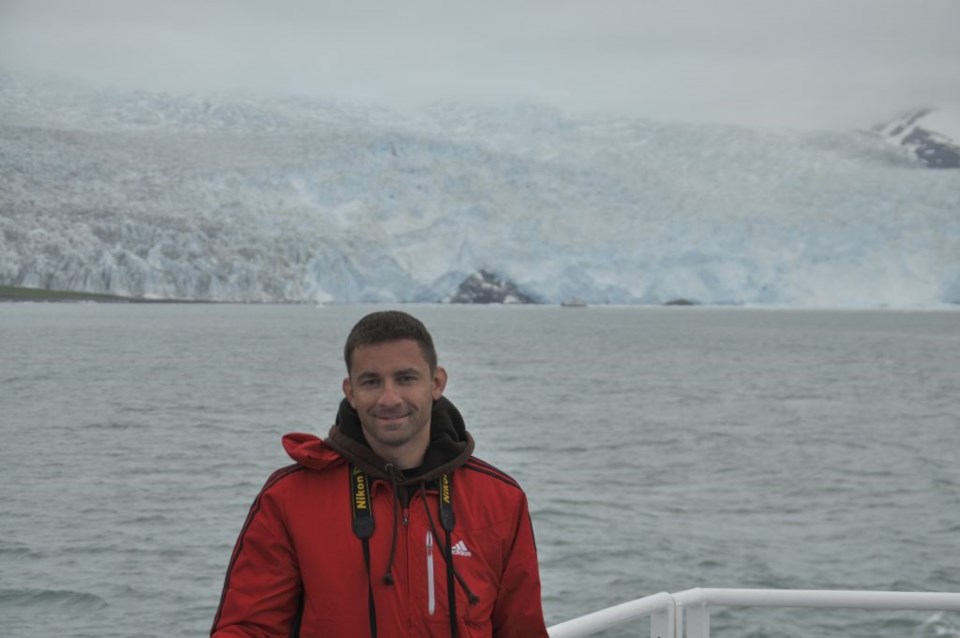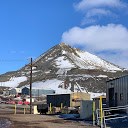This content was originally published by the Longmont Observer and is licensed under a Creative Commons license.
The next free lecture in the current series at the Longmont Museum is this coming Thursday, 17th October. The intriguing title is Antarctica: Catching Snow in the World’s Southernmost Desert.
We tend not to think of cold regions of the world as being deserts – Sahara and Kalahari usually come to mind – but the simplest dictionary definitions describe desert as a barren area of landscape where little precipitation occurs and, consequently, living conditions are hostile for plant and animal life.
NCAR scientist Scott Landolt has worked in the Research Applications Laboratory for over 20 years and will be presenting Thursday’s lecture. He will share an overview of the Antarctic snow measurement research he is conducting, the challenges of working in Antarctica, day-to-day life around McMurdo Station, and stunning photography of the Antarctic ice sheets.

One of Landolt’s primary research areas focuses on improving snowfall measurements and observations. He was an active participant in the World Meteorological Organization (WMO) Solid Precipitation Intercomparison Experiment (SPICE) to establish a world standard for snowfall measurement. More recently, Landolt has been actively working with the Federal Aviation Administration (FAA) on developing methods to utilize snowfall measurements with aircraft deicing practices.
Why is measuring snowfall such an important project?
Snow accumulation is the primary precipitation method that sustains the Antarctic ice sheets. The Antarctic ice sheet extends almost 5.4 million square miles, roughly the area of the contiguous United States and Mexico combined, and contains 7.2 million cubic miles of ice.
We know that the Antarctic Peninsula, which juts out into warmer waters north of Antarctica, has warmed 4.5 degrees Fahrenheit since 1950. A large area of the West Antarctic ice sheet is losing mass, probably because of warmer water deep in the ocean near the Antarctic coast. However, in East Antarctica, no clear trend has emerged, although some stations appear to be cooling slightly.
Overall, scientists believe that Antarctica is starting to lose ice, but so far the process has not become as quick or as widespread as in the Greenland ice sheet. It has been estimated that, if the Antarctic ice sheet melted, sea level would rise by 200 feet.
Clearly measuring snowfall and thus being able to assess the status of the Antarctic ice sheet is vital. Yet snowfall remains one of the most difficult meteorological variables to accurately measure, especially in windy conditions.
The three-year field program funded by the National Science Foundation is focused on testing recent advances in technology to determine if accurate snowfall measurements are now possible in the Antarctic environment and this is why Landolt spends November on site in Antarctica.
A Longmont native, Landolt graduated from Skyline in 1994 and received his undergraduate degree at Metro State and his Masters and PhD at CU. In addition to his research, Landolt oversees the NCAR Pre-College Internship Program (PRECIP) that brings high school students to NCAR for the summer to do research with scientists. Outside of NCAR, Landolt is a professor at Metropolitan State University of Denver in the meteorology program.

Landolt is the only NCAR scientist right now with a project that requires him to travel there. The length of time for scientists working on site varies from project to project and is usually no less than 1 month but can last up to a full year, with Landolt ’s Antarctic stays being 4 to 5 weeks.
Before he can go on-site, Landolt has to go through the physical qualification process to assure NSF that he is healthy enough to travel and stay there. This requires a full physical, a trip to the dentist and a full blood workup. Landolt says that the most difficult thing he’s had to adjust to is the 24 hours of daylight. He thinks that most people aren't bothered by the cold and, unless they are at one of the field camps, (Landolt is based at the McMurdo station) isolation isn't too much of a problem either.
Landolt is speaking at the Longmont Museum on Thursday, 17th October at 7:15 p.m. Admission is free, but reservations are recommended at (303)651-8374 or LongmontMuseum.org.


